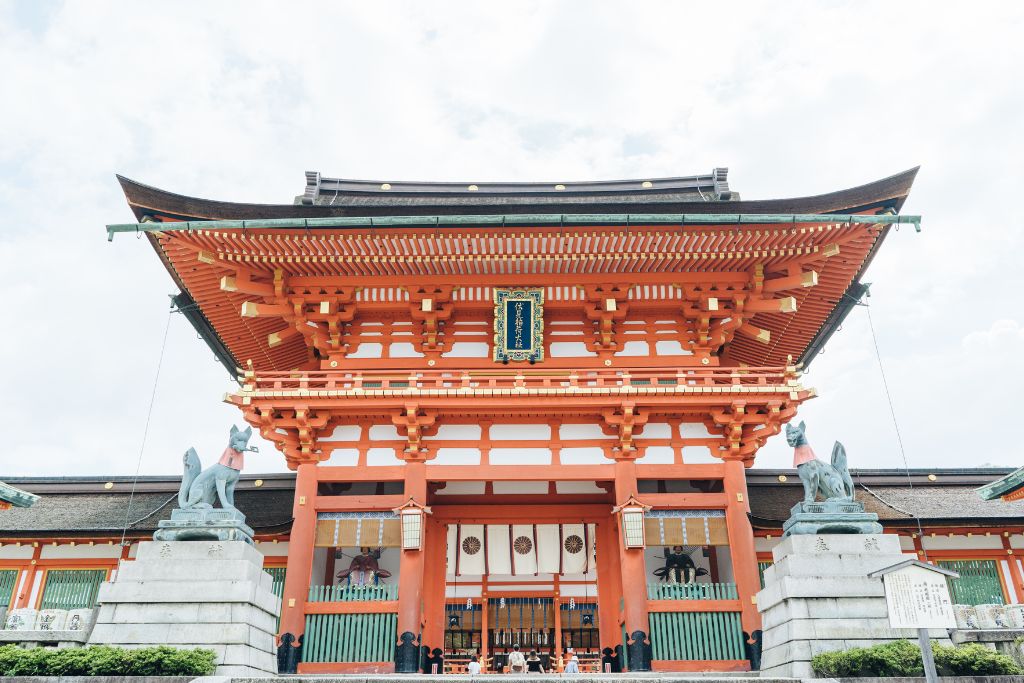Fushimi Inari Shrine is one of the most popular tourist destinations in Japan. The shrine is known for its beautiful blue inari trees, and visitors can enjoy a variety of activities such as visiting the shrine’s temple, taking a walk through the forest, or visiting the many restaurants and shops that are located within the shrine. One of the most iconic destinations in Japan is Fushimi Inari Shrine. Located in the southern part of Kyoto, this famous shrine is home to over 5,000 torii gates. These vermilion shrines are a must-see for visitors to Kyoto, and it is easy to see why so many people come here each year. Learn more about this famous attraction, including the history behind the Torii Gates and the shrine buildings themselves!
Getting There
If you’re planning a trip to Kyoto, Fushimi Inari Shrine is a must-see destination. It is a stunning mountain-shrine complex that features bold red torii gates that are sure to be a major focal point of your Japanese travels.
A shrine is a place of prayer for bountiful harvests, business success, and many other blessings. People from all over Japan come here to pray for good luck, prosperity, and a safe and healthy life.

Another important part of the shrine is the hundreds of fox statues, also known as kitsune, which enshrine the god of rice and business. Some foxes even have a key in their mouth, which is said to symbolize the ability to open up the rice granary in ancient times and bring forth sustenance for all.
As well as the foxes, thousands of torii gates have been donated by businesses to worship the god of business and prosperity. These torii gates line the 4.2 km main path and are a fascinating sight to behold.
Shintoism
Shinto is a religion based on the belief that gods (kami) exist in trees, mountains, animals, rivers, and water, and also in people. Kami are considered to be good spirits that help keep people healthy and happy, and some are enshrined in shrines.
Unlike many monotheistic religions, Shinto is an optimistic faith because it sees people as fundamentally good. Evil spirits are thought to cause disease, poverty, and other problems in the world, so Shinto followers perform rituals of purification and prayers to protect themselves from these evil spirits.

Visitors enter a Shinto shrine by stepping through a torii, a traditional gate that separates everyday space from sacred space. They cleanse themselves with a basin of water and then pray to the kami for good luck. Once inside the prayer hall, they call the kami’s attention and offer offerings such as rice or money. They may also wear a special embroidered sachet called an Omamori that contains prayers to guarantee their well-being.
The Torii Gates
In many Japanese shrines, you’ll find paths lined with brilliant vermilion torii gates. These are considered to be the boundary between the temporal world and the holy precincts of a shrine, where deities live.
The Torii Gates associated with Fushimi Inari Shrine are a popular photo spot for tourists. They are also believed to bring good luck and business to those who pray for prosperity.

Once you step inside the torii gate-covered hiking trail, called Senbon Torii (“thousands of torii gates”) at the back of the main grounds, a tunnel of endless vermillion torii spreads out before you.
Each torii gate along the trail is dedicated to the shrine by individuals or companies who have donated money after their wishes were fulfilled. It’s a tradition that has been carried out for generations.
The Shrine Buildings
Fushimi Inari Shrine is one of Japan’s most famous shrines and a world heritage site. Its orange torii gates (literally translated as “torii” or “gates”) dot the landscape of Kyoto, attracting thousands of visitors from all religions each day.
The shrine complex is dotted with easily accessible worship halls at the base of Mt. Inari and connected to each other via a network of vermilion torii gate-lined paths winding up the mountain’s steep, heavily wooded heights to more remote inner shrines.

At the main entrance to the shrine stands the Romon Gate, which was donated in 1589 by Toyotomi Hideyoshi. Behind it is the Honden, a grand building that encourages visitors to pay respects to the resident deity by making a small offering. There are also several statues of kitsune, foxes that are believed to be messengers for the god of rice and agriculture. They wear a red bib and hold a key in their mouth that allows them access to the granary where the rice is stored.
If you’re looking for a unique and meaningful way to celebrate your religious heritage, check out the new line of flags from Japan. These beautiful flags feature intricate designs and symbols that represent various faiths and beliefs, allowing you to proudly display your heritage in a colorful and eye-catching way. Whether you hang them inside your home or outside in your yard, these flags are sure to spark conversations and show your pride in your religious background. Don’t miss out on this opportunity to celebrate your heritage in a fun and meaningful way!


